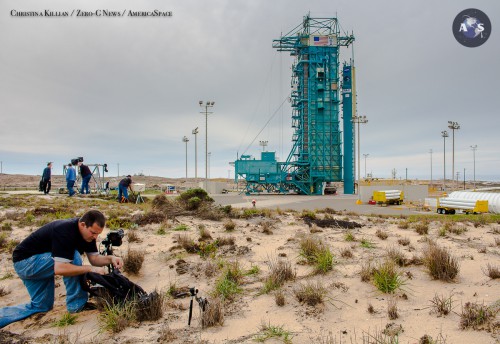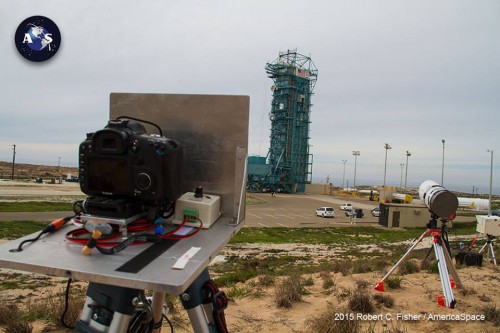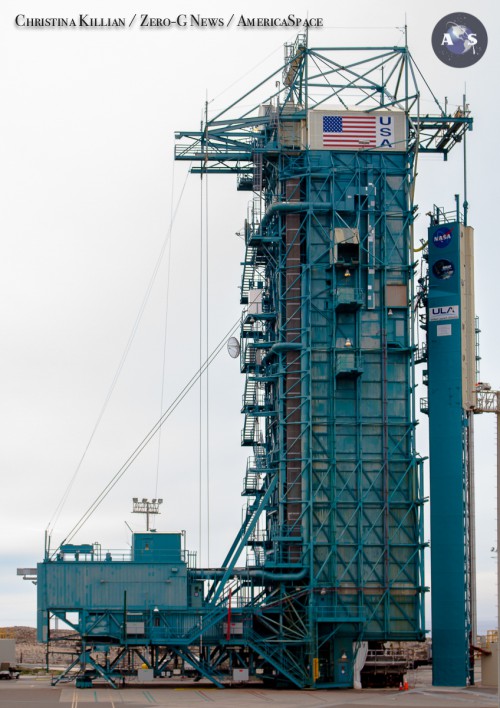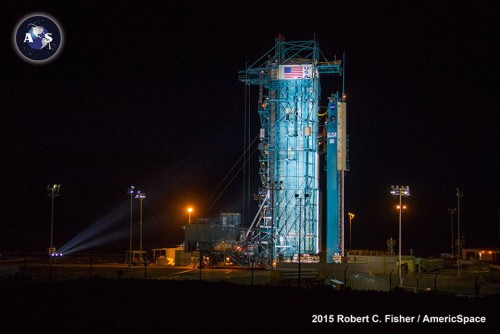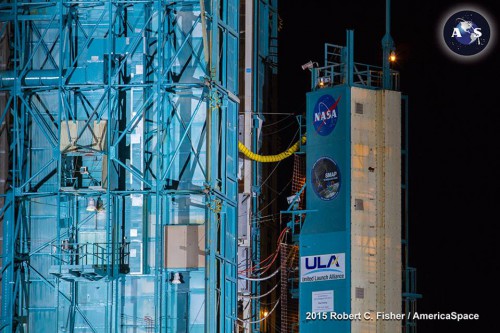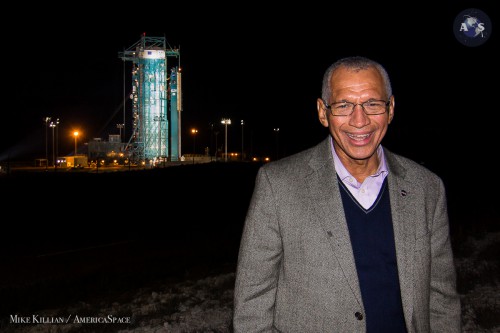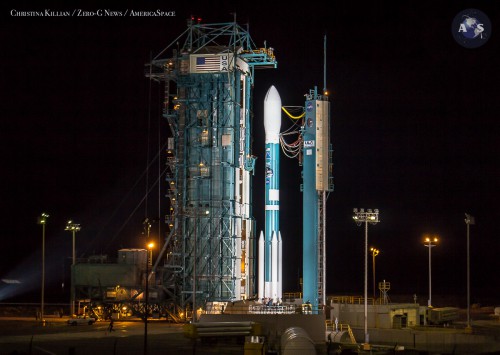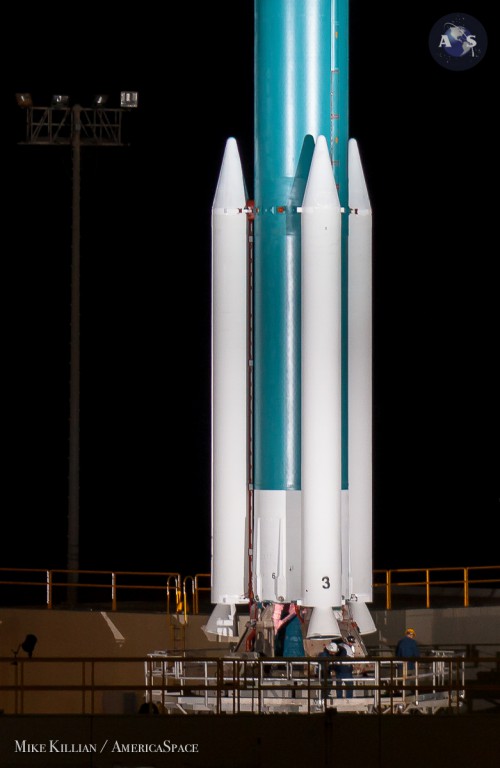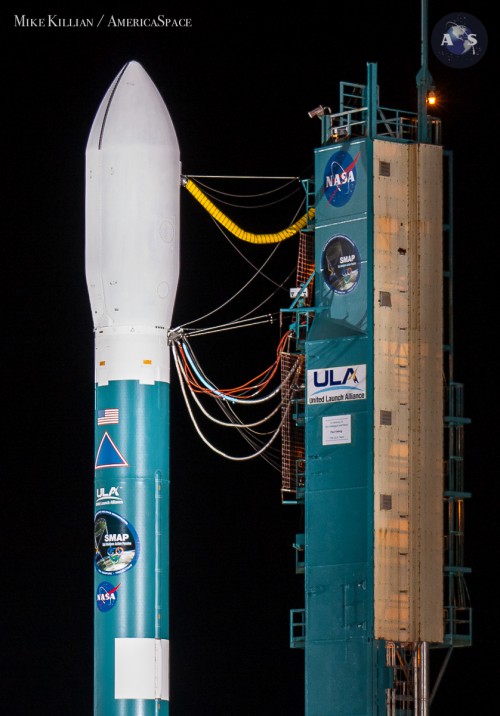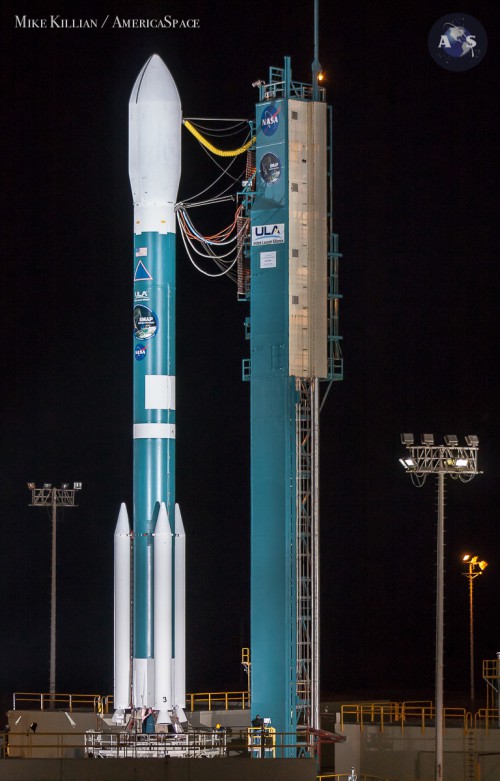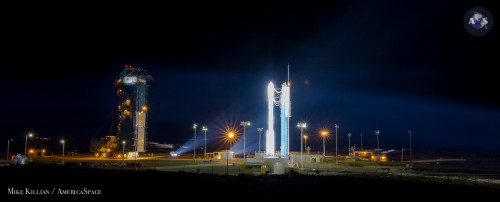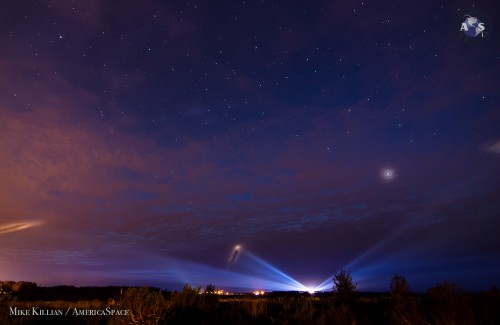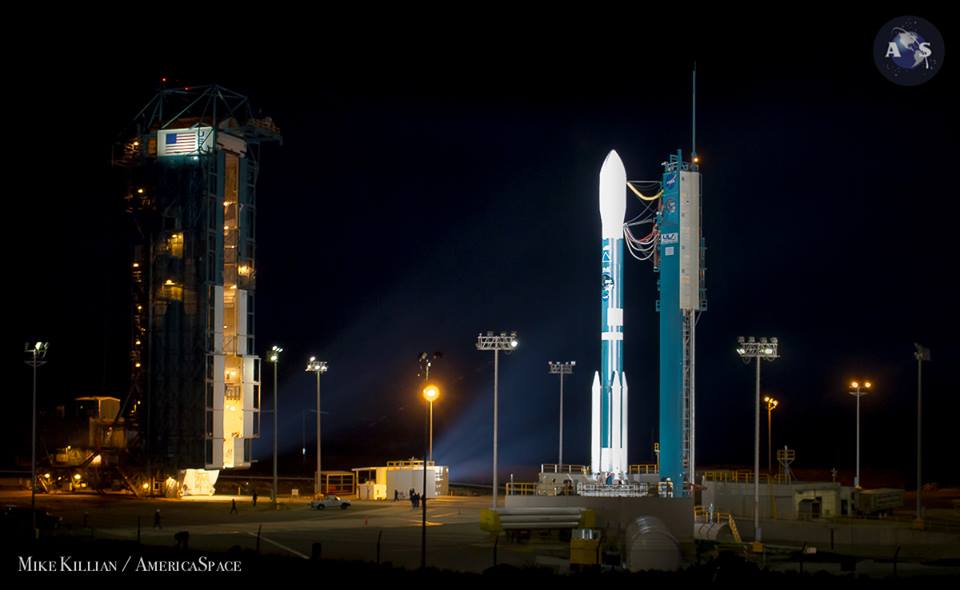
Mother Nature and a relatively minor technical issue forced ULA to keep their Delta-II rocket, and NASA’s SMAP satellite, grounded at Vandenberg Air Force Base in southern California the last few days, but as of this evening it’s all systems GO for launch attempt number two early Saturday morning. Strong upper level winds forced a scrub on Jan. 29, followed by the discovery of minor debonds to the booster insulation during routine inspections after the scrub, which forced ULA to stand down an additional day for repairs.
The official launch weather forecast calls for a 100 percent chance of favorable conditions for a liftoff attempt at 6:20 a.m. PST, with light winds, scattered clouds, and temperatures in the mid 40s expected at T-0. Fog, however, may be a factor, something that is common with launches from Vandenberg Air Force Base.
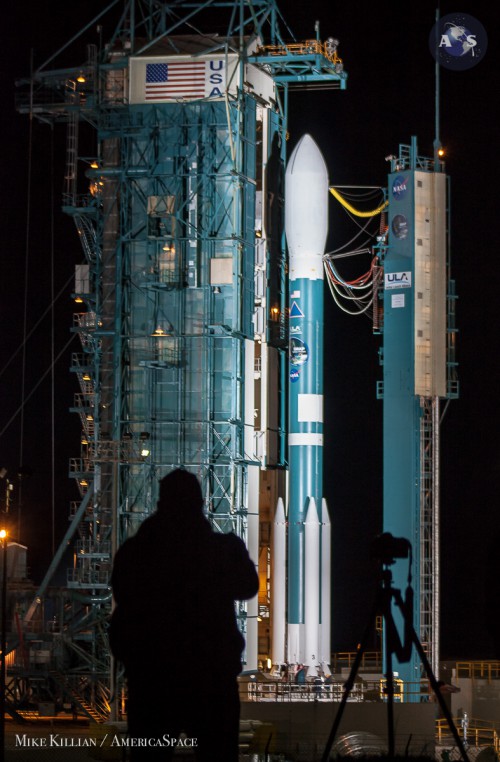
Follow our SMAP launch tracker for regular updates throughout the countdown overnight, with live streaming video from the launch site beginning at 4:00 a.m. PST.
When it does fly it will mark the 153rd launch of the Delta-II rocket, delivering NASA’s 2,080-lb Soil Moisture Active Passive (SMAP) spacecraft into a near-circular orbit of about 425 miles (685 km), inclined 98.116 degrees to the equator. SMAP also marks the 52nd NASA payload for the Delta II, and its 43rd launch from Vandenberg SLC-2, coming just six months after one of its siblings lofted the Orbiting Carbon Observatory (OCO)-2 from the same site.
The U.S. Air Force discontinued use of the Delta-II in 2011, despite the fact that the booster boasts a 99.3 percent success rate over its operational lifespan, which goes back to 1989, when it first launched the GPS Navstar satellite. NASA contracted with ULA for four more Delta-IIs in the fall of 2011.
With OCO-2 already in orbit and SMAP ready to launch, the next Delta-II won’t fly until late 2017, when it will deliver NASA’s Ice, Cloud and Land Elevation Satellite (ICESat)-2 to orbit, followed by launch of the Joint Polar Satellite System (JPSS) a couple years later.
Countdown operations will get underway late this evening (Friday, Jan. 30), when the Mobile Service Tower (MST) rolls back to its launch position, about nine hours before T-0. Five hours later, terminal countdown operations will commence, with liquid oxygen being pumped into the booster’s first stage a little under two hours ahead of launch. With the first stage fully loaded with liquid oxygen and a highly refined form of rocket-grade kerosene (known as “RP-1”), the automated countdown will kick off at T-4 minutes.
Three seconds before liftoff, the single RS-27A main engine of the first stage will roar to life, producing 200,000 pounds (90,700 kg) of thrust at sea level. This Rocketdyne-built engine will support the Delta II for the first 4.5 minutes of ascent. Strapped around the base of the first stage, the trio of 42-foot-long (12.8-meter) ATK-made solid rocket motors (SRM’s) will ignite at T-0. Together with the RS-27A main engine, and a pair of verniers for roll controllability, these will power the Delta II stack away from SLC-2 and establish it onto the proper flight azimuth of 196 degrees, for the precise injection of SMAP into its 98.116-degree-inclined orbit.
By 35 seconds into Saturday morning’s flight, the vehicle will pass Mach 1, and at 50.3 seconds it will encounter a period of maximum aerodynamic stress on its airframe, a phenomenon known as “Max Q.” The three SRMs will exhaust their powder-based solid fuel and burn out at T+64.7 seconds, but will remain attached to the rapidly ascending Delta II for more than half a minute, before finally being jettisoned at T+99 seconds. After this point, the RS-27A engine will continue to burn hot and hard, shutting down at T+261.8 seconds, some 4.5 minutes after leaving Vandenberg Air Force Base. Its role in the mission now complete, the first stage—which measures 87 feet (26.5 meters) in length—will be jettisoned shortly afterwards, making way for the ignition of the Aerojet-built AJ-10-118K second stage engine at T+276 seconds.
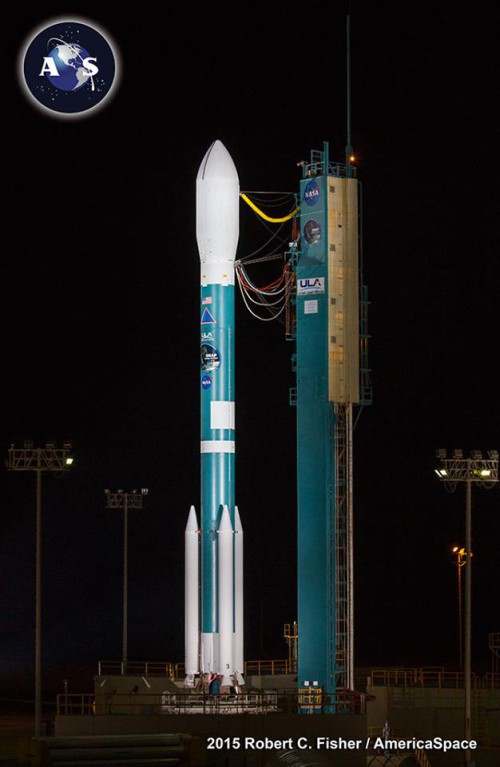
Unlike the RS-27A, the Aerojet engine is capable of being restarted in flight and will support two discrete “burns” to deliver SMAP into orbit. Less than half a minute into the first burn, at T+295 seconds, the 27.9-foot-tall (8.5-meter) PLF—responsible for protecting SMAP from aerodynamic, thermal, and acoustic stresses in the lower atmosphere—will be jettisoned, exposing the satellite to the space environment for the first time.
The second stage engine will shut down for its First Cutoff (known as “SECO-1”) at T+643.6 seconds, about 10.5 minutes after departing Vandenberg. It will then coast for the next 41 minutes, ahead of the First Restart at T+3098 seconds, almost 52 minutes into the mission. This second burn will last 12.1 seconds, ending with SECO-2, and will be followed by another period of coasting—lasting 300 seconds, or exactly five minutes—preparatory to the separation of the SMAP satellite at T+3410.5 seconds. Assuming that all planned milestones are met, NASA’s soil moisture watcher will be released into orbit about 56 minutes and 50 seconds after launch.
Members of the public hoping to watch the launch in person near Vandenberg AFB can do so from a viewing area set up 5 miles from SLC-2W. Google Map coordinates 34°46’18.42″N, 120°31’51.82″W. Parking is free, but limited, and the Air Force 30th Space Wing usually does provide loud speakers of the launch commentary through the countdown. Facilities are also available.
Once SMAP goes operational it’s expected to work for three years, but NASA’s spacecraft are well known for lasting decades, and so it’s safe to assume a longer life than three years for SMAP. The spacecraft will provide the most accurate and highest-resolution measurements of global soil moisture ever obtained; measurements which will help researchers and industry understand the planet as an integrated system—the processes linking Earth’s water, energy, and carbon cycles.
READ all about NASA’s SMAP satellite and its upcoming mission.
- Article written by Mike Killian and Ben Evans.
BELOW: All photos credit Mike Killian, Robert Fisher, and Christina Killian for AmericaSpace and Zero-G News, all rights reserved.
– Want to keep up-to-date with all things space? Be sure to “Like” AmericaSpace on Facebook and follow us on Twitter: @AmericaSpace
Missions » SMAP »




